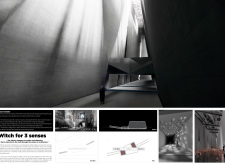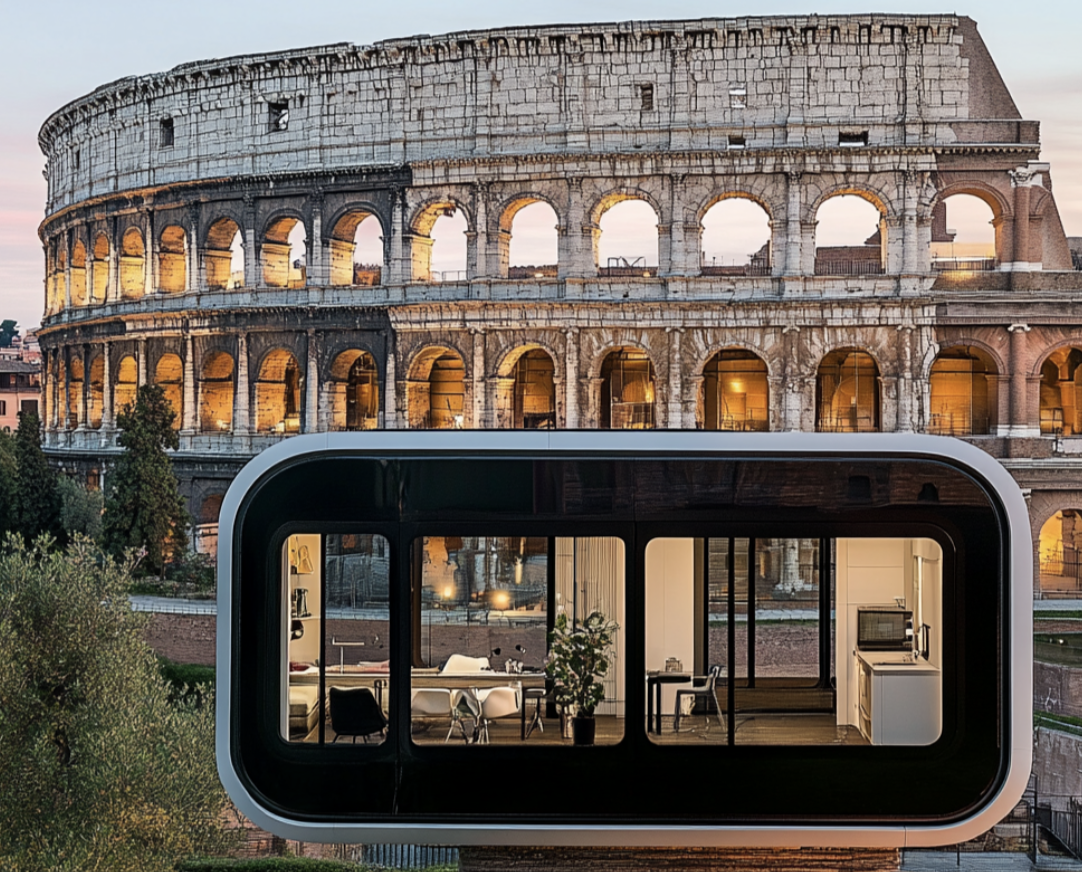5 key facts about this project
The architectural project "Witch for 3 Senses" focuses on blending spatial experience with sensory engagement. It seeks to create an environment that fosters emotional connection through the innovative manipulation of light, sound, and physical interaction. This design effectively integrates distinct architectural elements while maintaining a cohesive theme of introspection and exploration.
The project encompasses various interconnected spaces that guide visitors through a journey emphasizing the interaction between human perception and architectural form. With a layout that invites movement and exploration, the design features verticality and openness juxtaposed with moments of confinement and containment. The interplay of different spatial conditions enhances the visitor's experience, prompting them to engage with their surroundings in a meaningful way.
Material Selection and Unique Approaches
A noteworthy aspect of "Witch for 3 Senses" is its smart use of materials, which serve both functional and aesthetic purposes. The project employs concrete for structural walls, providing durability and a raw texture. Glass elements in skylights facilitate natural light, creating an atmospheric quality within the interiors. Steel is utilized to enhance structural aesthetics, while wood brings warmth to the spaces, forming a tactile contrast with more industrial materials.
This project stands out due to its deliberate design strategies that emphasize sensory interactions. Architectural decisions are made with the intention of affecting light quality and sound behavior throughout the interior. High walls and reflective surfaces create dynamic light patterns that shift during the day, while acoustic panels offer a controlled auditory environment that engages visitors' senses. The unique integration of these elements defines the character of the space, providing visitors with a unique experience.
Spatial Dynamics and User Engagement
The architecture promotes interaction between users and the environment through a carefully crafted spatial progression. Central corridors accented by geometric forms lead to differentiated spaces that evoke various sensory responses. The design invites visitors to explore contrasts, such as expansive areas that foster a sense of freedom and smaller, intimate spaces that encourage contemplation.
The overall architectural strategy aims not only to create a physical structure but also to invite users into a dialogue with their surroundings. By focusing on the intersection of light and perception, the project facilitates an engaging experience that fosters emotional and sensory awareness. Such an approach exemplifies how thoughtful architecture can enhance user experience and connectivity to the environment.
For more detailed insights into the project, including architectural plans, sections, and design ideas, interested readers can delve deeper into the presentation of "Witch for 3 Senses" to fully appreciate the intricacies of this architectural endeavor.




















